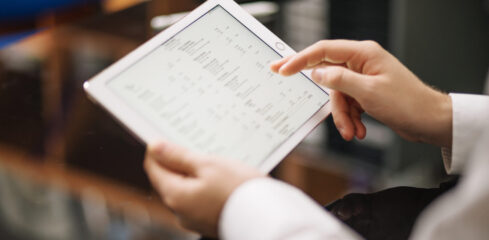
Whether your business deals in raw materials, components and parts or finished products, your inventory is an essential source of potential revenue. It represents a significant investment and is part of your total current assets.
Learn more about what current assets are and the best way to calculate and use your current assets.
What Is Considered a Current Asset?
In financial terms, a current asset refers to all the assets a company owns that it can convert to cash within one year. On a balance sheet, current assets represent what a company has immediate ownership of. They demonstrate its short-term liquidity and ability to pay its current obligations.
A company might also have items on its balance sheet indicating long-term assets or non-current assets. These include assets they can’t convert to cash within a year, such as properties, buildings, plants, equipment and facilities. While a current asset’s value depends on its current fair market value, a long-term asset’s value is tied to its purchase price.
A breakdown of current assets on a company’s balance sheet might include:
- Cash: Cash refers to the funds a company has at that moment.
- Cash equivalents: On top of cash, cash equivalents include certificates of deposit, short-term government bonds, treasury bills and money market funds.
- Accounts receivable: The accounts receivable section indicates all the money that customers or clients owe the company. Accounts receivable represent payment the company has not yet received for goods or services that they’ve delivered.
- Pre-paid liabilities: Advance payments, such as payments to insurance providers or contractors, are considered pre-paid liabilities. Although companies can’t necessarily convert them to cash, they qualify as current assets because they free up capital for other uses.
- Marketable securities: A company’s marketable securities include all the liquid investments they can quickly convert to cash without impacting the market value. For example, if converting shares of a company would reduce their overall market value, they would not qualify as marketable securities.
- Other liquid assets: While most liquid assets qualify as marketable securities, others may not. For example, a company might have excess funds invested in a short-term security that it can access if needed.
Is Inventory a Current Asset?
Inventory is often also a current asset. A company’s inventory includes all its raw materials, components and finished products. In almost all cases, inventory is a current asset because a company can liquidate it within a year. However, there are situations where inventory is a long-term asset.
Some factors that impact whether inventory is a current asset include:
- Industry: Companies in certain industries might be able to liquidate their assets more quickly than others. An air conditioner manufacturer may find it easier to liquidate their inventory within a year than an oil tanker manufacturer.
- Market conditions: Spending and market conditions might also affect the liquidity of a company’s inventory — it’s more challenging to sell inventory during economic downtrends and recessions.
- Demand: As demand rises and falls, it can impact whether inventory is a current asset for a company. For example, if demand plummets for a company’s products due to market saturation, it can affect its ability to liquidate its inventory within a year.
How to Calculate Current Assets
Calculating a company’s current assets involves adding together all the assets they can liquidate within a year. On a balance sheet, you might see acronyms standing in for the different sections:
- Cash — C
- Cash equivalent — CE
- Inventory — I
- Accounts receivable — AR
- Prepaid expenses — PE
- Marketable securities — MS
- Other liquid assets — OLA

The general formula for calculating current assets is C + CE + I + AR + PE + MS + OLA = Current Assets total. Most balance sheets will already total all sections of a company’s current assets.
The following are three examples of what a company’s balance sheet might look like, with a breakdown of the different components that go into calculating the total current assets:
Example #1 — META
In the third quarter of 2022, META, the new name for Facebook, had a total of $58,315 million. The breakdown on their balance sheet in millions of USD reads:
- Cash and cash equivalents: $14,308
- Accounts receivable: $11,227
- Inventory: N/A
- Marketable securities: $27,468
- Prepaid expenses: $5,080
- Other liquid assets: $232
Since META has no inventory to speak of, they don’t list that value on their balance sheet. META’s total current assets are $8,351 million less in the third quarter of 2022 than in the final quarter of 2021.
Example #2 — Subaru Corp
The car manufacturer Subaru Corp has significant inventory, which plays a larger role in its current assets. The breakdown on their balance sheet in millions of Japanese Yen reads:
- Cash and cash equivalents: ¥1,041,811
- Accounts receivable: ¥335,879
- Inventory: ¥607,743
- Marketable securities: ¥271,484
- Prepaid expenses: N/A
- Other liquid assets: ¥95,912
In the third quarter of 2022, they had around ¥2.3 billion in total current assets.
Example #3 — Kroger
Kroger, a U.S. grocer, pulled in $13,403 million in the third quarter of 2022. Their current assets as of September 30 include:
- Cash and cash equivalents: $241 million
- Accounts receivable: $2,019 million
- Inventory: $8,666 million
- Marketable securities: $675 million
- Prepaid expenses: $593 million
- Other liquid assets: $1,209 million
How Can Businesses Use Current Assets?
Companies can use their current assets for various purposes, including:
- Financing day-to-day operations: A lot goes into a company’s daily operations. Large corporations likely have enormous day-to-day costs that can include rent, salaries, purchasing and other operational expenses. Businesses can use their current assets to fund these operations.
- Managing working capital: Your business needs to manage its working capital to avoid cash flow issues. A positive working capital means a company has enough current assets to pay off its liabilities.
- Determining liquidity ratios: You can discover a lot about a company when you look at its liquidity ratios, which give you a picture of its financial health. For example, a current ratio tells a business if it can feasibly repay its short-term obligations with its current cash or cash-equivalent resources.
Trust Finale Inventory for Inventory Management and Accounting Solutions

Finale Inventory offers a highly-scalable inventory management system perfect for e-commerce businesses of all sizes and industries. Accounting functions are essential to keep track of your current assets and make informed decisions about your business. With our accounting features, you get various inventory accounting capabilities, including charts of accounts with QuickBooks integrations, general ledger transactions and reports and inventory valuation reports.
Finale Inventory’s software is intuitive and easy to use and our team of professionals is here to support and guide you with unparalleled service. When you work with us, you’ll receive a personal customer relationship manager to answer any questions you have along the way.
To try our software for free, schedule a demo and see what Finale Inventory can do for you!





